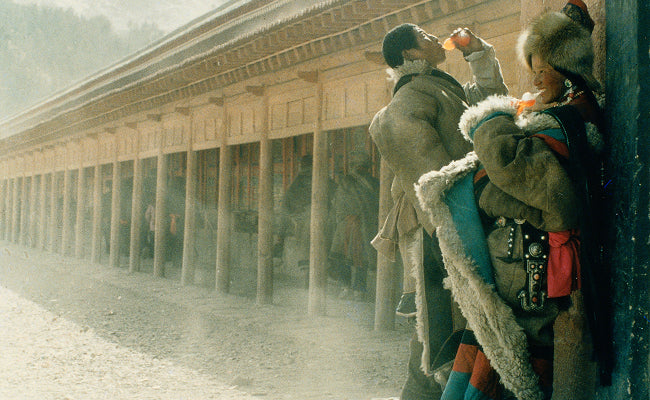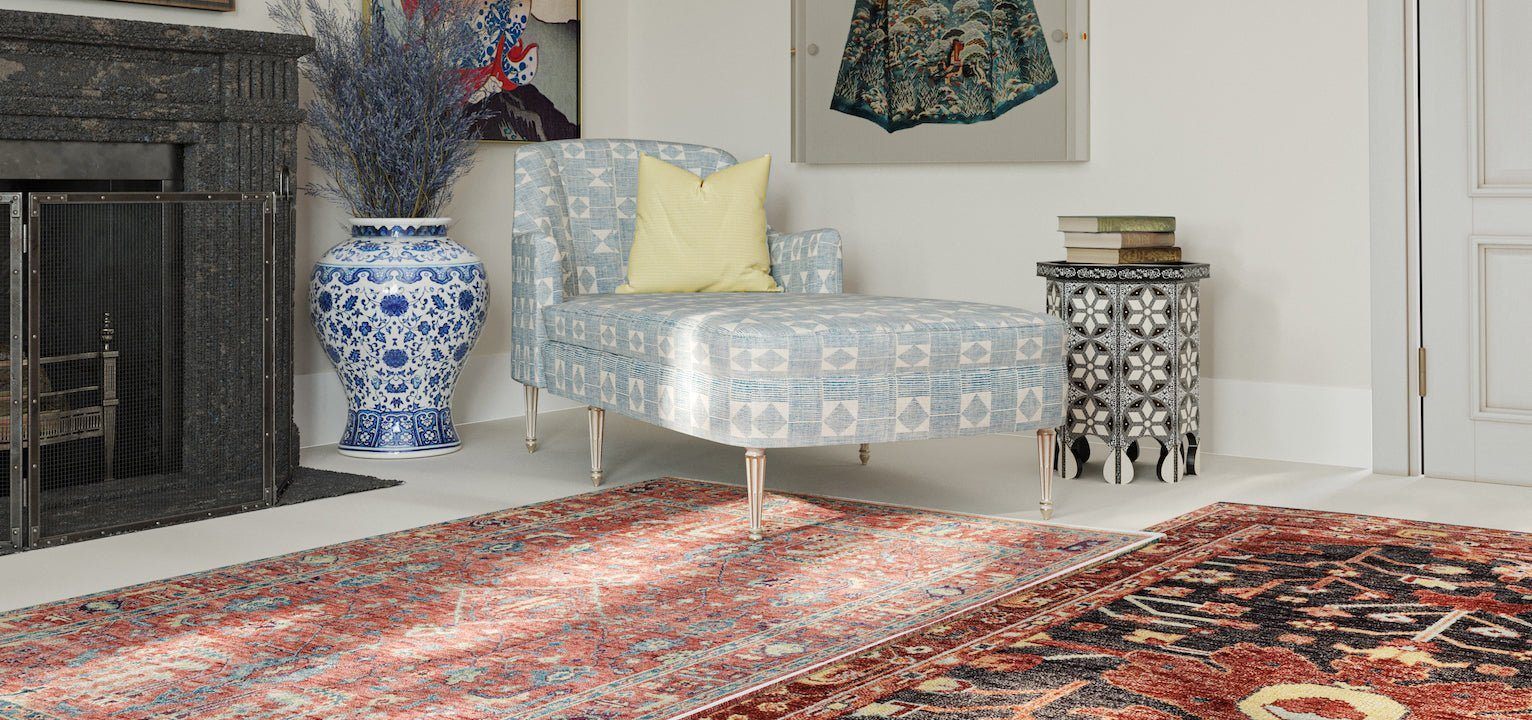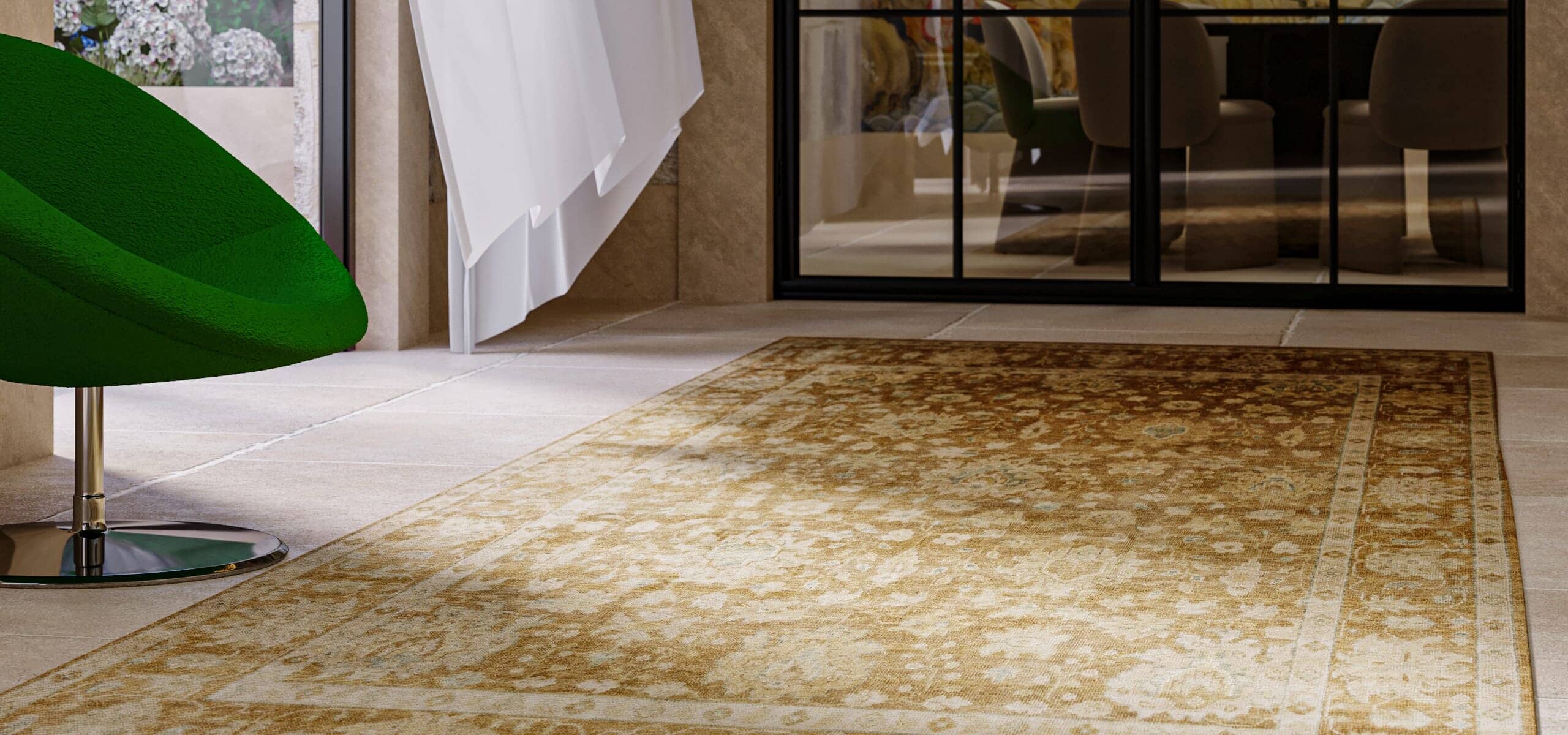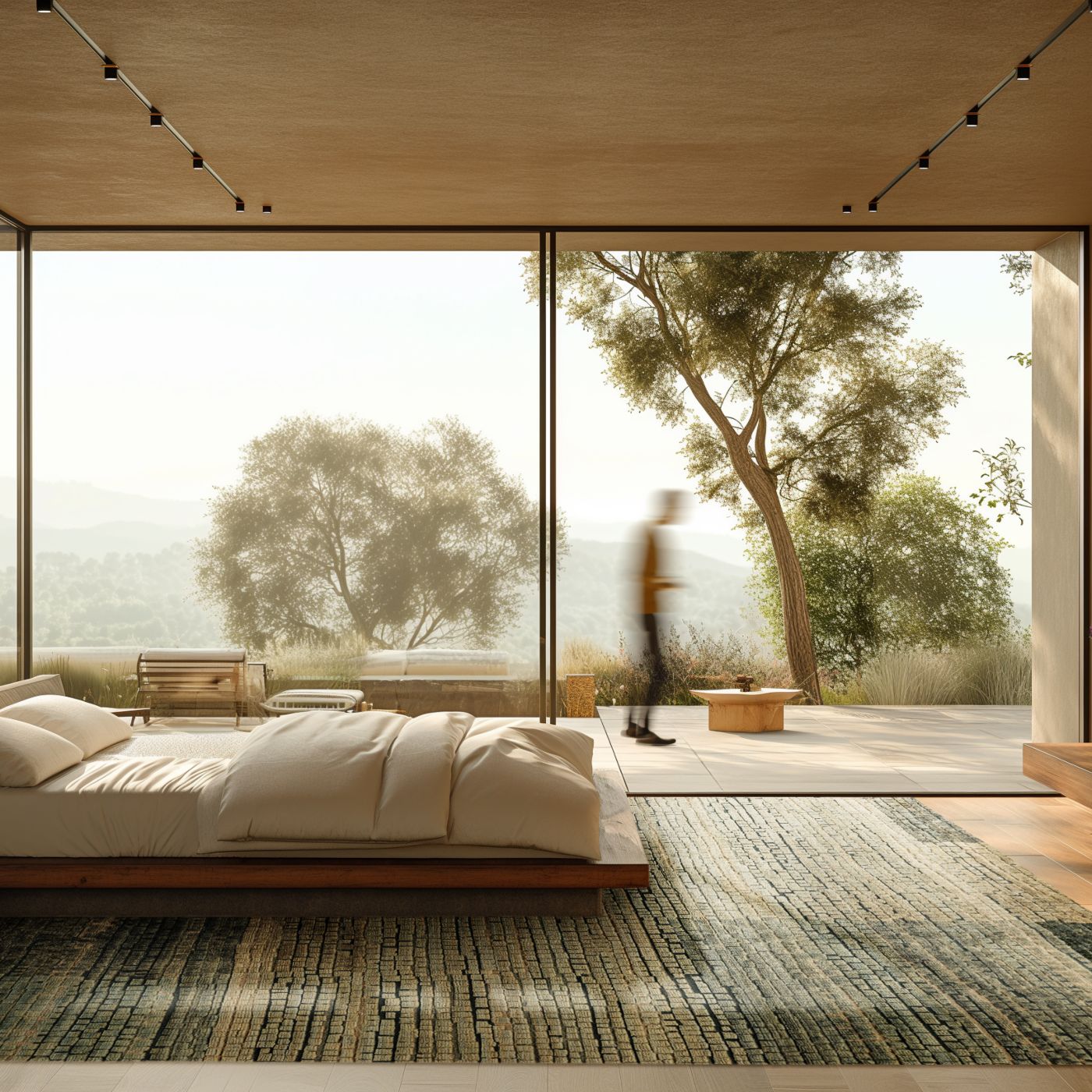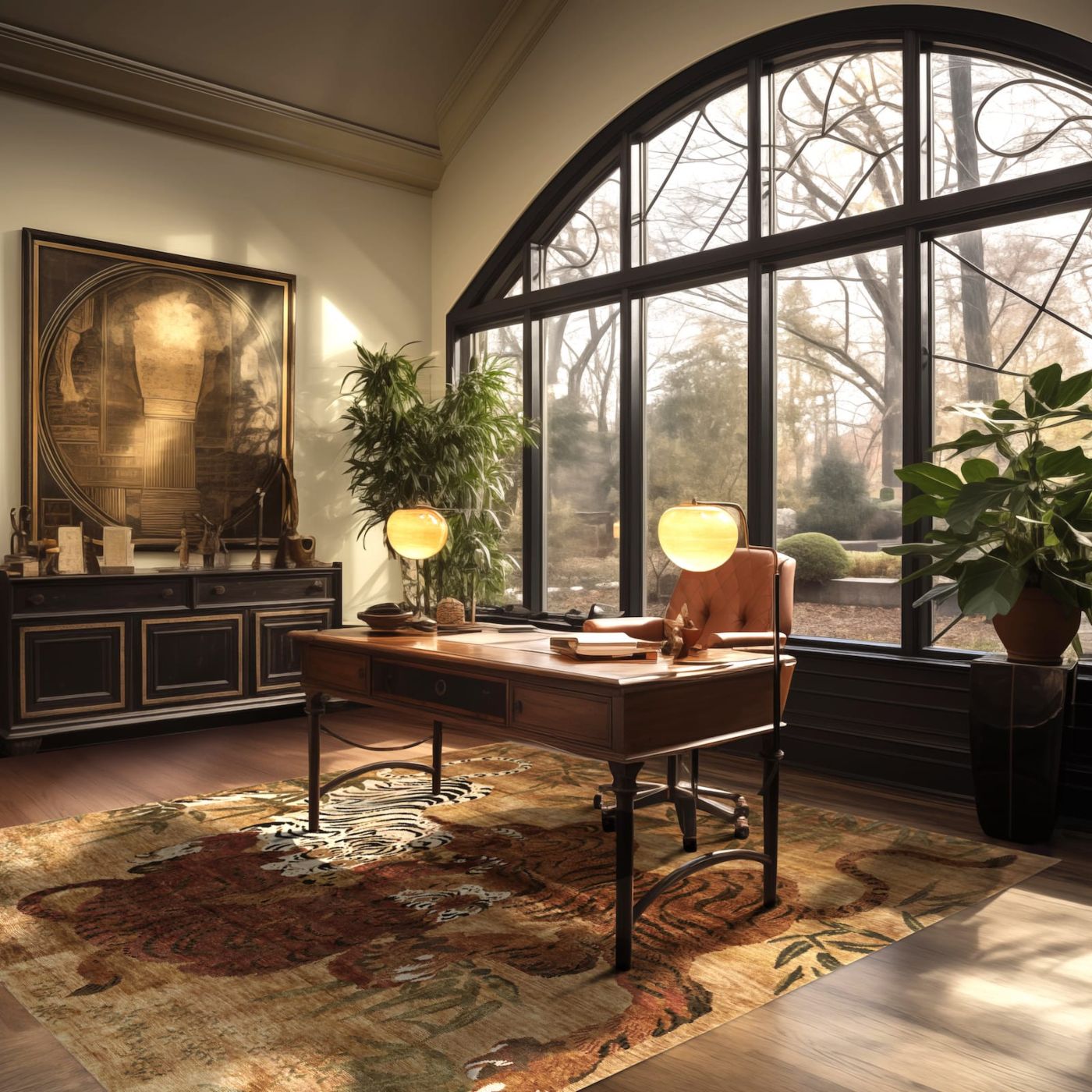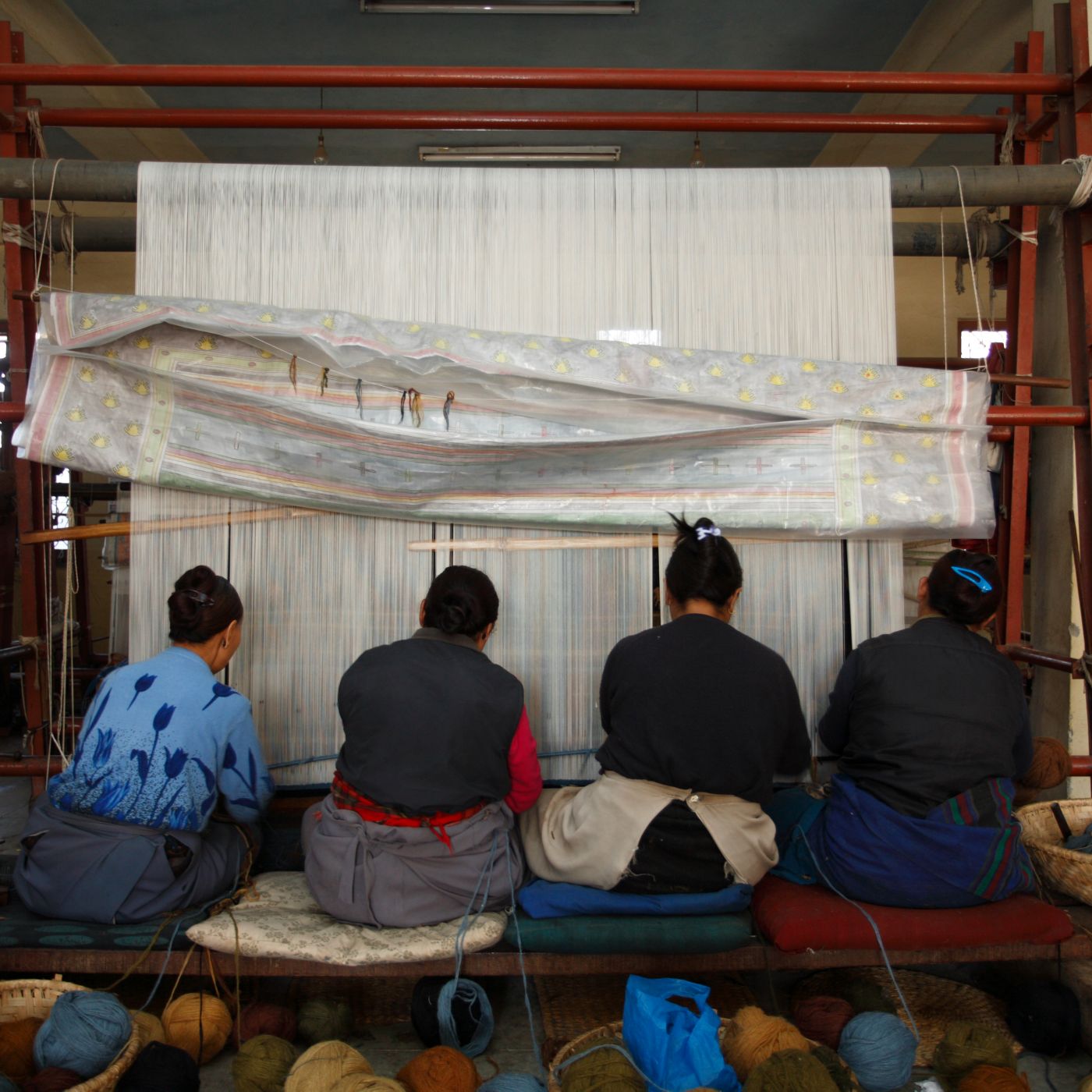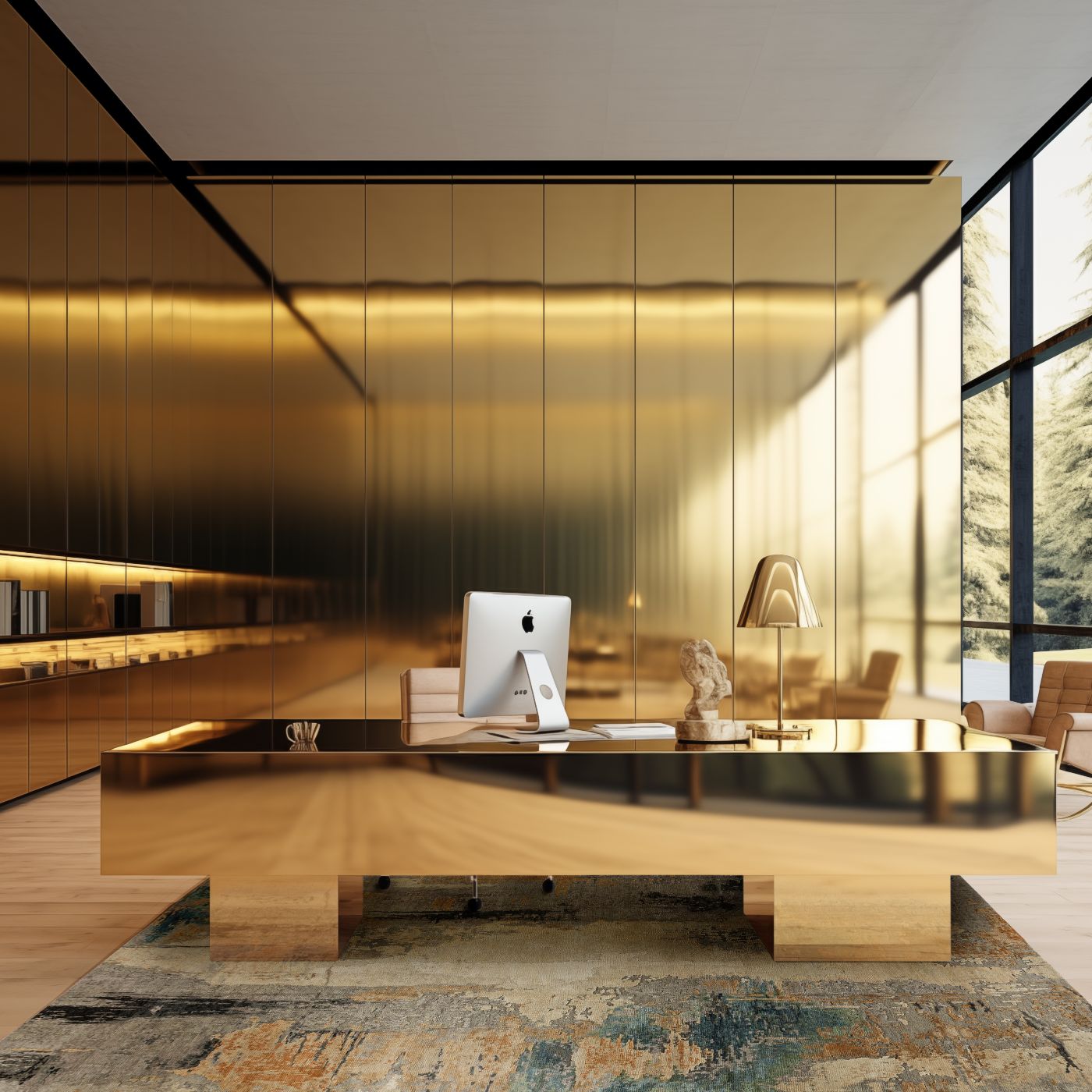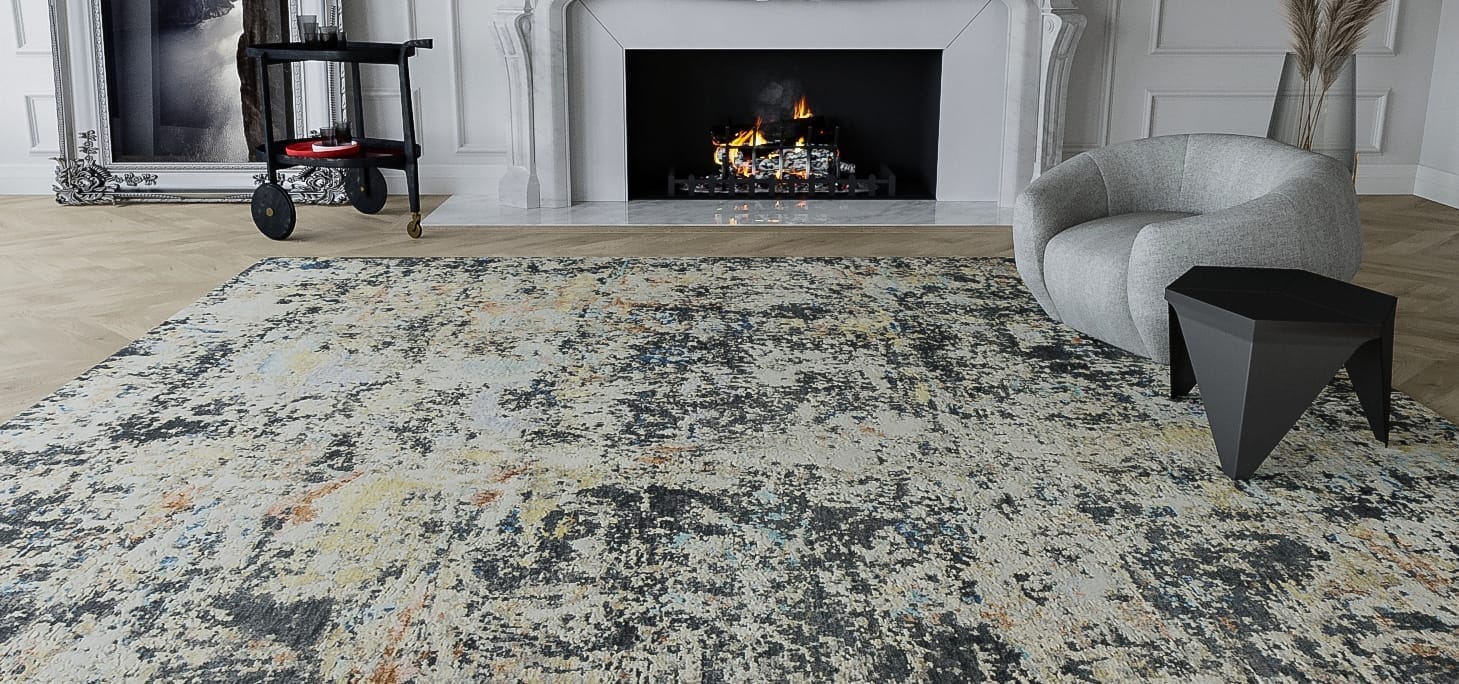
How to Select the Perfect Rug Size and Shape for Your Space
Outfitting your space with all of the elements coordinating perfectly, complementing one another and fitting neatly with size, scale and placement can seem like an overwhelming task.
A lack of proper planning leaves much room for mistakes. Our team of design experts are here to help you consider how to choose the perfect rug size and shape for your space, creating a professional look that makes everyone think you hired an experienced interior designer.
Choose, Place and Group Your Furniture
If you’re planning a room from scratch, a good place to start is by acquiring all of the main furniture elements that will make up the room. Place the furniture in the room based on traffic flow, navigation, function and purpose. To avoid the mistake of making a room look too small or crowded, be sure to add enough space between furniture elements. When placing for alignment, angle pieces out and away to create an open invitation that avoids harsh angles and overly tight layouts.
Once the furniture is set, you can avoid the biggest mistake homeowners often make when purchasing a rug: selecting too small of a size. Instead of opening up a space and enlarging it, this misstep makes a space look much smaller than it actually is, creating a tight, busy feel that lacks continuity and calm.
EXPERT TIP: To avoid the most common rug-purchasing mistake of choosing too small of a size, properly place and group your furniture before measuring to ensure the rug will fit underneath the furniture legs.
Measure the Space Properly
Upon setting the furniture properly, measure the space between elements and add extra length to ensure the legs and feet of the furniture are placed on top of the rug. This overlap measurement is the ideal scale and size of rug for your room.

EXPERT TIP: The overlap of 4”-6” beneath the front legs of each piece of furniture ensures your rug size is large enough to match the scale of the room, grounding the elements and creating flow and calm.
Another design tip to prevent selecting a rug that is too small is furniture grouping. When adjusting your design layout, your goal should be to show a dedicated area without sectioning it off too harshly from the rest of the room.
Rug Shape: Runner, Rectangle Circle?
Understanding the space you are working with is key in picking the right carpet. You may prefer the look or a certain style or shape, but ensuring it fits sensibly into your design space guarantees it will function well and look amazing. A rug must do both for it to truly have a magical impact in your room.
RELATED: The Tufenkian Guide to Pile Height Perfection
The Runner
Runners are perfect for narrow, smaller-scale spaces, such as a kitchen or hallway. Since they often occupy high-traffic areas, the high-durability of wool makes it the best material choice.

L to R: Kawakubo Birch Runner, Persian Gabbeh Tajik, Banded III Light Taupe
The Rectangle
Rectangular rugs are the obvious and most common choice, offering more versatility than any other shape of rug. Rectangular rugs serve as important additions to bedrooms, living rooms, and other main home spaces as they help to not only decorate, but also to separate the zones within these more expansive areas.
Rectangular rugs come in a plethora of size options, and because of this, offer the most options for fitting into unique spaces and specific areas of rooms.
Small rectangular rug sizes that are popular in doorways, entryways, kitchens and baths include:
- 2’ x 3’ / 61 x 91 cm
- 3’ x 5’ / 61 x 152 cm
- 4’ x 6’ / 122 x 183 cm
Large rectangular rugs, or area rugs, are designed to serve virtually as carpets. Popular sizes include:
- 6’ x 9’ / 183 x 274 cm
- 8’ x 10’ / 244 x 305 cm
- 9’ x 12’ / 274 x 366 cm

L to R: Handloom Solid Rose, Handloom Solid Indigo, Handloom Solid Ivory
Rectangular carpets larger than this fall into the oversized rugs category. While being aesthetically pleasing, area rugs function quite well as the main foundational element of a room’s design. Oversized rugs come in the following sizes:
- 10‘ x 14’ / 305 x 427 cm
- 12’ x 16’ / 366 x 488 cm
- 13’ x 18’ / 396 x 549 cm
RELATED: How to Place an Area Rug in a Living Room
The Circle
Circular (or round) rugs, while offering the most whimsy and creativity, might be the trickiest to place within the home. The curved edges complement smaller spaces well and fit well underneath coffee tables or as a grounding element beneath a round dining table. A circular rug often sits at the center of the room or in the corner, depending on the furniture it is paired with.
RELATED: 5 Ideas for Pulling Off Round Rugs Successfully and Stylishly

L to R: Persian Gabbeh Tajik, Tibetan (Timpa)
Outfitting your space with all of the elements in perfect coordination can be accomplished by understanding the basics of design layouts, furniture grouping and placing, and proper size selection.
Remember to coordinate your rug selection so they perfectly complement one another and lend to a fluid, seamless and pleasant design experience.
UP NEXT: What Tufenkian Carpet (sizes and colors) Complement My Rug?



